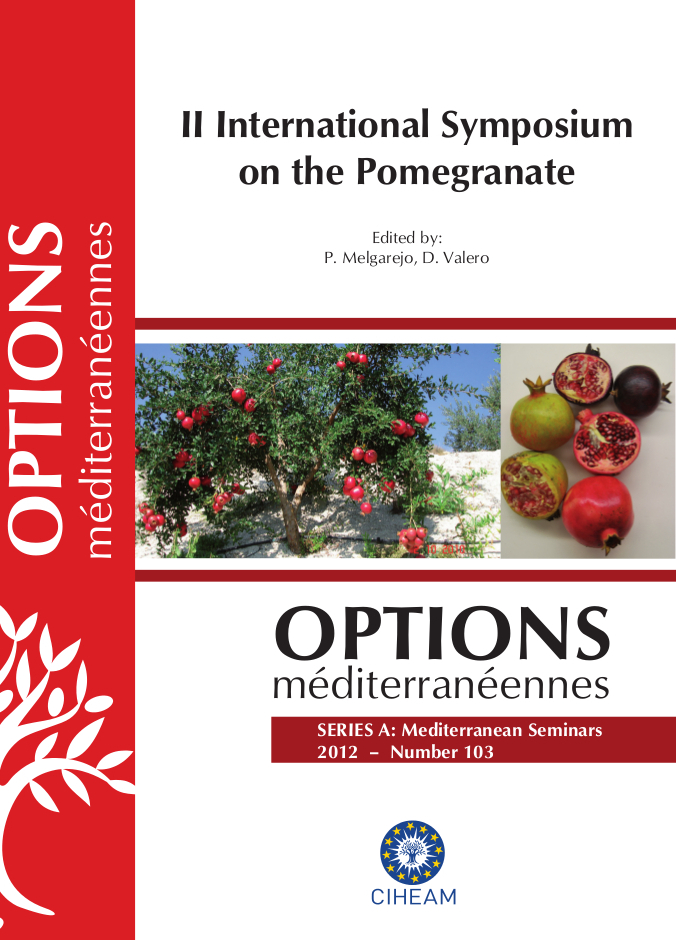| Article précédent | p. 67-69 | Article suivant |
Morphological and physiological characteristics in pomegranate cultivars with different yields
Variations in yield, percentage of hermaphrodite flowers, leaf mass to area ratio, leaf area, stomatal density, leaf gas-exchange and stem water potential (Ψstem) characteristics were studied in four pomegranate accessions. Yield was greatest in 11005 and Kallisti, compared with 11019 and 11021 accessions. Similarly, percentage of hermaphrodite flowers was greatest in 11005, followed by Kallisti which may be related with greater yields. In addition 11005 had highest photosynthetic rate and leaf area, but leaf mass:area was lowest. Intrinsic water use efficiency was highest, and stomatal conductance and transpiration were usually lowest in 11005 and Kallisti, a characteristic that may enable water conservation. Significant greater stomatal density was also found in Kallisti, which may suggest for a flexible stomata regulation to water deficit conditions. There were no significant differences among the studied genotypes in Ψstem.
- [ Afficher ]
- [ Télécharger ]
- [ Exporter la citation ]
Vous pouvez télécharger la citation au format :
- [ Imprimer ]
-
Mots-clés
DENSITE, ECHANGE GAZEUX, HERMAPHRODISME, INDICE DE SURFACE FOLIAIRE, POTENTIEL HYDRIQUE, STOMATE, TIGECiter cet article
Drogoudi P., Pantelidis G., Manganaris A. Morphological and physiological characteristics in pomegranate cultivars with different yields. In : Melgarejo P. (ed.), Valero D. (ed.). II International Symposium on the Pomegranate. Zaragoza : CIHEAM / Universidad Miguel Hernández, 2012. p. 67-69. (Options Méditerranéennes : Série A. Séminaires Méditerranéens; n. 103). 2. International Symposium on the Pomegranate, 2011/10/19-21, Madrid (Spain). http://om.ciheam.org/om/pdf/a103/00006907.pdf



